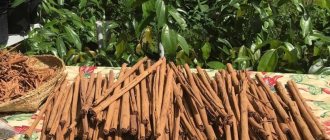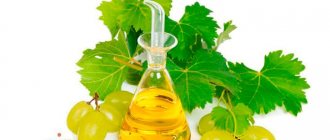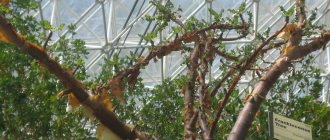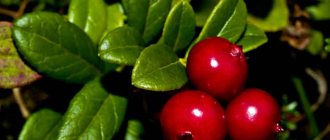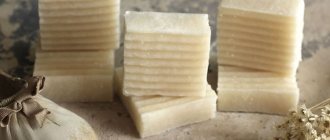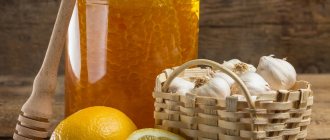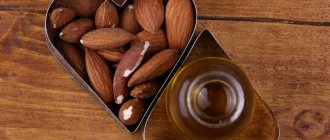The evergreen thuja “tree of life” has been actively used by folk healers and adherents of homeopathy for several millennia.
One of the valuable parts of the plant are the cones. The scope of use of their properties is so vast that it is difficult to imagine.
The therapeutic effect on most organs and systems is complemented by an active cosmetological effect, and high efficiency, simplicity of folk recipes and a minimum of contraindications expand the popularity of this product. How and when can it be used?
Beneficial features
The value of a product is determined by its following qualities:
- enriching the body with valuable vitamin and mineral components;
- providing a diuretic, astringent, expectorant, antiparasitic, tonic,
- antiallergic, diaphoretic, hemostatic effect;
- suppression of inflammatory foci;
- harmful effects on bacteria, viruses, fungal infections;
- reducing the likelihood of developing malignant neoplasms;
- improvement of the reproductive, digestive and respiratory systems;
- dilatation of the bronchi and dullness of cough;
- increasing the productivity of the immune system;
- bringing the psychological and emotional state back to normal;
- acceleration of regenerative processes;
- positive effect on the condition of the skin (increased elasticity, removal of puffiness and external
- signs of overwork, suppression of inflammation, narrowing of pores);
- hair transformation (providing a nutritional effect, activating hair follicles);
- suppression of pain syndrome.
The listed properties are the basis for combating a number of health problems:
- colds, cough, bronchitis, pneumonia, etc.;
- bleeding;
- cystitis;
- mood swings, increased irritability, apathy, loss of enthusiasm for life, stress, depression;
- worms;
- swelling;
- dysfunction of the genitourinary system;
- inflammatory diseases of a gynecological nature;
- gastrointestinal diseases;
- allergies;
- enlarged adenoids;
- frigidity and problems with potency;
- dental diseases;
- cosmetic problems;
- various types of inflammatory processes.
Thuja cones: medicinal properties and use in folk medicine, are the buds and fruits useful?
Thuja is widely used in folk medicine, as well as in pharmaceuticals, homeopathy, and cosmetology. Its value is determined by its composition. Thuja contains:
- vitamin C;
- glycosides;
- flavonoids;
- tannins;
- saponins;
- thuic acid;
- aromadendren;
- resins;
- pentoxifylline;
- tannin;
- sesquiterpene alcohol.
In addition, thuja produces phytoncides in large quantities. These substances destroy harmful microorganisms.
Indications for use
Preparations and remedies with thuja help cope with many diseases. Among them:
- ARVI, acute respiratory infections, colds;
- pneumonia;
- cystitis;
- swelling;
- dental diseases;
- gynecological diseases;
- disruption of the genitourinary system;
- disturbances in the functioning of the gastrointestinal tract;
- allergy;
- depression, constant stress;
- apathy, sudden mood swings;
- problems with potency, frigidity;
- enlarged adenoids;
- inflammatory processes of various nature;
- bleeding, etc.
Oils
Thuja oils are divided into several types, depending on their purpose:
- essential oil;
- homeopathic (can be dropped into the throat and nose);
- aroma oils.
Essential oils are only allowed for spot application (for example, to get rid of papillomas), since they are a super-strong healing agent.
Homeopathic oils have a wide range of applications: for respiratory diseases (sinusitis, bronchitis, asthma), rheumatism and varicose veins, adenoids, skin diseases (lichen, itching, warts, eczema, papillomas), for normalizing digestion and the genitourinary system, cleansing the body of toxins , wound healing.
Aroma oils relieve fatigue, calm, increase concentration, and are used to prevent colds and flu.
The diverse medicinal properties of thuja are causing the return of medical interest in this plant. You can even prepare medicine from needles, sprouts, cones or bark at home. The main thing is to choose the right concentration.
about the medicinal properties of thuja
Thuja (or thuja) is a gymnospermous monoecious coniferous plant belonging to the Cypress family. Another poetic name for this plant is often found - the tree of life.
As a rule, these are evergreen small trees or shrubs, but sometimes large trees up to 60 meters high are also found. The leaves are very beautiful, have a decorative appearance, needle-shaped.
The thuja fruit is a small oblong cone with flat, winged seeds that ripen in the fall of the first year.
The homeland of thuja is North America and East Asia.
What is used in folk medicine
In total, there are 2 varieties of thuja - western and eastern. Both types of wood are considered medicinal and have similar properties. Oriental arborvitae mostly grow in China. They can be recognized by their bluish bumps.
In our country, western thujas with greenish-yellow cones are ubiquitous. It is believed that the highest concentration of beneficial substances is contained in the cones, but in folk medicine, needles, branches, and shoots of the tree are often used. Oils, decoctions, and tinctures are prepared from them.
What to do with cones on thuja?
Arborvitae rightfully occupy a central place in many suburban areas. High frost resistance and variety of thuja varieties make these shrubs indispensable in landscape compositions and for creating evergreen hedges.
Young dense thuja bushes are especially loved by gardeners, but in mature plants at the age of about 10 years, the crown often looks sparse and diseased. In many cases, the cause is the ripening of thuja fruits - small cones.
From a distance, such thujas appear to be covered with dried shoots and growths.
Dan Mullen / Flickr.com
Cones contain seeds, and fruiting is a natural process of plant development. Thuja lays flower buds at the ends of young side branches in good light conditions. It is believed that after a hot and dry summer, under the influence of stress, plants that are in danger of drying out will bear fruit especially abundantly in the summer of the following year.
5u5/Flickr.com
While the thujas are young and undersized or there are only 2-3 specimens, you can simply limit yourself to constant trimming with pruning shears, annually cutting off all the excess cones. But this is easy to do only while the thujas are young and short.
Every spring, before new shoots begin to grow, prune the thuja and cut off no more than a third of the length of last year's growth. In mid-summer the trees are pruned again. With regular trimming you will get rid of brown bumps and form a beautiful dense crown.
New branches will constantly grow on the thuja, and the plant will be fluffy. In addition, this will allow you to quickly change the crown, giving it the shape of a cone, column, or spiral.
FD Richards / Flickr.com
During dry periods, water plants more deeply. Thuja loves regular evening or morning spraying of water along the crown and actively grows new green branches. From May to August, spray plants weakened by haircuts with anti-stress preparations “Epin-Extra” or “Zircon”. Treatment can be carried out up to three times during the summer, taking breaks of up to two weeks.
Fertilizing with special mineral fertilizers for conifers with magnesium will help to grow green branches. They ensure intensive growth and bright, healthy coloring of needles and reduce darkening in winter.
Of the organic types, only rotted compost and vermicompost can be used. Fertilizing is carried out twice, once in early spring and then in summer.
In mid-August, the plants stop feeding so as not to stimulate the growth of new shoots and the formation of flower buds.
S. Rae / Flickr.com
Choose thuja varieties that are less prone to seed formation. For example, for the columnar variety “Smaragd” of the western thuja, the formation of cones is not very typical. It retains its emerald green needles regardless of the season. But the fast-growing variety “Brabant” produces cones in large quantities. As a result, its crown looks looser. This variety is also prone to seasonal browning.
A set of agricultural practices and the correct selection of varieties will help reduce the formation of cones on thujas and improve the appearance of your plantings.
Use in folk medicine
Thuja is excellent for auxiliary therapy. The use of products with thuja should definitely be discussed with a doctor, as they have contraindications and uncontrolled use can cause severe harm to health.
Next, we will present you with recipes for preparing medicinal products, as well as the recommended dosage for taking them. Don’t forget to discuss this with your doctor, because each case is individual.
Thuja tincture
This is an almost universal remedy that helps against various ailments. The tincture is prepared simply:
- collect fresh pine needles and thuja cones, wash, finely chop;
- 3 tbsp. l. place the resulting raw materials in a ceramic bowl;
- fill the needles with medical alcohol (200 ml);
- Cover the dish with a lid and place in a dark place;
- infusion time - 2 weeks, do not forget to shake the contents;
- then strain.
If medical alcohol is not on hand, you can use vodka instead. However, in this case, per 100 ml of vodka you will have to take 1 tbsp. l. crushed raw materials.
How to use:
- Internally. Add 10-15 drops of tincture to 50 ml of water, take before meals 3 times a day. Course – 2-4 weeks. After which you should take a two-week break and, if necessary, repeat the course. It is used for severe coughs, upper respiratory tract diseases, asthma, chronic liver diseases, sexually transmitted diseases, etc.
- Externally. Apply the tincture to the problem area of the skin 2 times a day. The course is until recovery. It removes enlarged pores, small papillomas, acne and warts well. In addition, it helps with rheumatism, mild frostbite, gum inflammation, etc.
Thuja decoction
The decoction is considered a good expectorant, anti-inflammatory and wound healing agent. For cooking, you can take any part of the tree or put everything together.
Source: https://KomnatnieCveti.ru/ovoshchi/pochemu-na-tue-mnogo-shishek-2.html
Description of thuja cones
Thuja belongs to the evergreen monoecious plants of the Cypress family. Propagated by seeds that ripen in cones. On one specimen, both female and male cones grow simultaneously.
The first ones are colored in a light green shade, oval in shape, and are localized at the ends of shortened leafy shoots. The latter are yellowish in color, sessile, located in the leaf axils.
An unripe thuja cone, when rubbed in your hands, emits a strong characteristic aroma of pine needles and leaves oily traces.
Pollination occurs in April-May. Ripening lasts six months. The cone, completely ready for reproduction, opens. The skin becomes lignified. Due to the opening, the fruit becomes like a wooden flower; inside it contains seeds with a thin film, which plays the role of wings and allows them to spread with the wind over long distances.
Medicinal properties
Young thuja cones have a lot of positive qualities.
First of all, it has a calming effect on nerve receptors , no matter in what form the product is used (internally or externally).
Aromatic extracts penetrate the brain centers through the nasal passages and promote relaxation, and, accordingly, improve overall well-being, relieve tension and muscle spasms.
- The main benefits of the raw materials in question are as follows:
- tropolones prevent the growth of cancer cells, which is an excellent cancer prevention;
- phytoncides and flavonoids stimulate the production of interferon, suppress the growth of bacteria and infections, and have a wound-healing effect;
- vitamins and minerals ensure restoration at the cellular level of all organ tissues and significantly increase immunity;
- due to the diuretic effect, stagnant processes are eliminated;
- air circulation in tissues improves;
- for problems with the respiratory tract, an expectorant effect is provided;
- Due to the effect on the nervous system, spasms are relieved and an analgesic effect is provided.
Also learn about the medicinal properties and uses of pine cones.
Use in folk medicine
The scope of use of thuja fruits is very extensive. Their use is relevant in the following cases:
- arthrosis;
- festering wounds;
- warts;
- mononucleotic diseases provoked by different types of herpes;
- infections of the upper respiratory tract, throat, mouth (stomatitis, thrush and the like), ears (otitis);
- bleeding gums;
- cardiovascular abnormalities;
- neurosis, post-stress syndrome;
- decreased immunity;
- infections of the genitourinary system in men and women;
- problematic facial skin;
- metabolic disease.
Collection and preparation of cones and fruits
Traditional medicine involves the use of only young cones . The maximum amount of useful elements accumulates in them in the period after pollination. Raw materials should be collected in late May - early June.
Important! Collecting cones for medicinal purposes can only be carried out in environmentally safe areas, away from roads and factories. Otherwise, the fruits will be a source of toxins that they accumulate from the atmosphere.
The fruits are picked by hand. Then use it for its intended purpose immediately or dry it . In the second option, the cones are placed on a flat surface in one layer on a tray covered with paper.
Leave in a well-ventilated cool area. Protect the raw materials from direct sunlight and turn them over periodically.
Once drying is complete, place into small dry glass containers.
Cooking methods
Proper preparation, which involves special types of processing, will help to reveal the full beneficial properties of the cones.
From thuja fruits you can make:
- jam;
- vodka tincture;
- ointment;
- decoction
Jam
This medicine is used in the treatment of ENT organs (sore throat, pharyngitis, tracheitis, etc.), upper respiratory tract (bronchitis), influenza and colds.
Step-by-step preparation of pine cone jam:
- Wash 1 kg of fruit in warm water, carefully removing the resin.
- Pour 1 liter of cold water over the cones, add 500 g of sugar. Put on fire, boil.
- Cook, stirring occasionally for 1 hour.
- Remove from heat, strain through a colander. Discard the cones, put the syrup on the fire and cook for another 1 hour.
- Pour the jam into jars and close the lids.
- Keep refrigerated.
Take this medicine 1 tsp. three times a day, regardless of food intake, with plenty of water. The course of treatment is 7–14 days
Jam can also be used as a prophylactic during an epidemic of influenza or viral diseases . For this purpose, take 1 tsp. in the morning for 2-3 weeks.
Find out also how the flowering of thuja affects the decorativeness of the tree.
In addition to the treatment and prevention of colds, the product can be an excellent raw material for anti-cellulite wraps . After a hot shower with a scrub, it is applied with patting movements to problem areas and then wrapped in cling film. Leave for 20 minutes, then rinse with warm water and lubricate the skin with nourishing cream.
This approach will help restore the elasticity of the dermis and get rid of the “orange peel”. Frequency of application: 1 time per week . Before first use, be sure to conduct a sensitivity test by applying a small amount of jam to your wrist. If after 30 min. no redness or itching, can be used.
Ointment
Ointments based on thuja cones are used to treat joints and back pain. To prepare the product, take 0.5 kg of cones, wash them and grind them in a blender. Add 2 tbsp to the gruel. l. alcohol or vodka. The resulting composition is mixed with a tube of Vaseline. Store the product in a glass container for no more than a month in the refrigerator.
Decoction
A useful thuja decoction will help with weakened immunity, colds, and bronchitis. In addition, it can be used to restore the functioning of the nervous system, wash hair to improve its structure, and cystitis.
Preparation of the decoction:
- Wash 0.5 kg of cones, pour 1 liter of boiling water.
- Boil for 10 minutes.
- Remove from heat. Leave for 30 minutes. and strain.
- Store for no more than 3 days in the refrigerator.
For colds, you can do inhalations . To do this, bend over the still hot broth and breathe in the fumes for 5 minutes. To enhance the effect, it is better to cover your head with a towel.
The frequency of procedures is 3 times a day for 1 week. The composition can also be taken orally, 1 tbsp. l. 3 times a day before meals. The course of treatment is also 1 week. Cystitis is treated in a similar way .
Only with this disease, ingestion of the fruit decoction is extended to a month.
To restore the nervous system, 0.5 liters of hot broth is added to the bathtub. Manipulations are carried out 3 times a week for 10–15 days. To improve the hair structure, the same composition is used as a rinse after washing your hair 3 times a week for a month.
It’s interesting to know how fir cone tincture is useful.
Contraindications and possible harm
It is worth understanding that the remedies in question will not be equally useful to everyone, but may be dangerous for some. Exceeding the dosage and using it for too long can cause problems with the gastrointestinal tract, allergic reactions in the form of urticaria, itching, and intoxication.
- The use of drugs based on thuja cones is completely contraindicated:
- pregnant women;
- children under 12 years old;
- allergy sufferers who have a history of reactions to any plants;
- epileptics.
Asthmatics are used with caution , only in cases where the cause of the disease is frequent viral infections of the upper respiratory tract, and in the absence of a history of reaction to herbal components.
The people's stock of knowledge, passed down from generation to generation, has brought to our time various recipes using thuja cones as a medicine for many diseases. If you use raw materials correctly, you can significantly increase the body's resistance to infections, improve the condition of the nervous system, and also restore the natural beauty and youth of the skin.
Source: https://fermer.blog/bok/hvoynye-derevya/tuya/tuya-polza-i-vred/14368-svojstva-shishek-tui.html
Western and eastern thuja
Two types of thuja tree are widespread:
- Eastern flatweed. Actively used in traditional Chinese medicine. Even a non-connoisseur will be able to distinguish the variety by the blue color of its young cones.
- Thuja occidentalis. Characterized by the green color of unripe fruits. The healing properties are in many ways similar to the first of these types.
Similarities between plants are manifested in the following aspects:
- assignment to one family;
- crown height and shape;
- the presence of many decorative forms;
- high tolerance of prunings (allows you to form the desired crown shape);
- susceptibility to certain diseases caused by fungal infections;
- list of beneficial properties and contraindications.
Plants differ in the following aspects:
- homeland (eastern North America and northern China + Iran, respectively, for the western and eastern varieties);
- shape, location and color of branches, leaves, cones, seeds.
Thuja occidentalis: medicinal properties and contraindications, benefits and harms
The thuja is a coniferous evergreen tree native to the forests of North America. It was its non-perishable wood that was used to hollow out the famous Indian canoes, and tea was brewed from thuja bark. The natives called the tree “white cedar.”
At the beginning of the 16th century, white cedar was brought from Canada to France during the reign of Francis I, who was a great lover of botany and rare species of flora. From the king, the thuja received the name “tree of life”.
Living sculptures were created from the plant using shearing, and alleys in Fontainebleau were planted with it. The great scientist Carl Linnaeus described the plant in 1753, from whom it received its Latin name. After 200 years, thuja reached Russia, spreading across all climatic zones of the country due to its cold resistance, unpretentiousness and beautiful appearance.
More than 120 garden species have been bred based on the western thuja. The plant is often called juniper, life tree (to paraphrase the king of France), iron tree.
Description of thuja and its chemical composition
Thuja occidentalis is a typical representative of its genus and belongs to the Cypress family. The genus is represented by trees and shrubs with needles in the form of scales or needles, which fall off along with the branches every 4-5 years.
Pollinated in April-May by bisexual buds, female (at the ends of the shoots) and male (in the axils of the leaves). The fruits are oval cones with winged seeds that ripen for six months. The whole tree has a pleasant specific aroma.
Important! Contains poison - the toxic substance thujone.
The tree of life includes:
- bioactive substances that suppress the activity of cancer cells - tropolones;
- essential oils: thujone glycoside, caryophyllene, cedrol, sabinene, borneol, etc.;
- tropolone cycles,
- vitamins and minerals;
- thujone is a neurotoxic substance;
- flavonoids of the flavan-3-ols group;
- sesquiterpenes – alcohol and hydrocarbon;
- resins, bitter pinicricin;
- traces of saponins;
- tannins; tannins;
- aromodendrin.
Useful properties of thuja occidentalis
The rich chemical and biological composition of Western thuja determines its beneficial properties.
- It has anti-blastoma properties due to the action of tropolones.
- It has an anti-inflammatory, hemostatic, antispasmodic effect.
- Has healing, antimicrobial properties.
- Acts as a natural immunomodulator.
- Suppresses the development of bacteria, viruses, microbes, thanks to a large number of phytoncides.
- Has a diuretic and antihistamine effect.
- Eliminates congestion in the bronchi and lungs.
- Relieves stress, improves the condition of the nervous system.
The excellent decorative properties of thuja occidentalis are widely used in urban landscaping. Fragrant evergreen hedges not only please the eyes, but also effectively clean the air from dust and toxic substances, improve the environment by releasing volatile phytoncides.
Best Recipes
- For viral diseases, herpes: young shoots (2 tablespoons) are infused in 250 ml of alcohol (70%) for 14 days. Take 10 drops three times a week for a week.
- Treatment of thrush, leucorrhoea: infuse young cones of the plant (1 tablespoon) in a thermos in half a liter of boiling water for 60 minutes.
After filtering through 5-layer gauze, the volume is restored by adding boiled water to 500 ml. Use for washing and douching with warm infusion throughout the week in the morning and evening. - Treatment of chronic runny nose, sinusitis: the aroma lamp is filled with a solution of 2 drops of thuja essential oil per 20 ml of boiled water. They breathe for 3-4 hours.
- For otitis media: soak a cotton swab in warm homeopathic oil (containing 15% essential oil), insert it into the sore ear, covering it with a piece of dry cotton wool, for 45-50 minutes. Repeat until pain disappears.
- Bath for relaxation and toning: add 10 drops of 100% juniper essential oil to the bathing water. The duration of bathing is no longer than 15 minutes.
Thuja essential oil restores the normal state of the nervous system after suffering stress and normalizes metabolism. It has phytoncidal properties, improves libido (treats frigidity in women and impotence in men).
In homeopathy, raw materials are used to produce a drug that helps treat tonsillitis, pharyngitis, tonsillitis - “Merifit”, acute radiculitis, sciatica, neuritis - “Akofit”. For the treatment of skin diseases, warts, papillomas, “Thuya” ointment is produced (manufacturer: Healing Herbs of the North Caucasus).
Contraindications
Taking medications based on thuja occidentalis:
- It is strictly prohibited for pregnant women due to the abortive effect of the substance thujone.
- Not for nursing mothers.
- Do not give to children under 12 years of age.
- Prohibited for epilepsy.
- Contraindicated for allergies and individual intolerances.
- Do not take simultaneously with alcohol.
Before taking medications containing thuja, be sure to consult your doctor.
Procurement of raw materials
Thuja is an unpretentious plant.
It can be found in the private sector, in the territories of production facilities, along roads, in park areas, in areas of entertainment and recreational organizations.
However, when collecting raw materials, one should not forget about safety. Thuja cones that grow in environmentally favorable conditions can be used.
Achieving a mature state occurs in November-December (this parameter may differ for different tree varieties).
However, young cones in late spring and early summer are characterized by the greatest value. Only such unripe fruits are used to prepare healing oil.
During the drying process, the following recommendations should be followed:
- placing raw materials in a thin layer in a ventilated room;
- isolated from direct sunlight;
- periodic turning of workpieces.
Article for you:
Pine cones: medicinal properties and contraindications, use in folk medicine and cosmetology
A glass or ceramic jar with a tight lid is suitable for storing the dried product.
Thuja in Europe
At the beginning of the 16th century, it came to Europe, where it was cultivated as an ornamental plant, but it was never used in medicine.
The king of France called the thuja the “tree of life.”
The first in Europe to appreciate the medicinal properties of thuja was S. Hahnemann , the founder of homeopathy, and included it in many preparations. Nowadays it is used in homeopathy in various types and forms of release.
Scrofulosis, eczema, sycosis, warts, prostatitis, mastopathy, hydrocele, improvement of immunity, diseases of the ENT organs - these are just some of the indications for the use of homeopathic medicines containing thuja. Liquid preparations “Merifit” and “Akofit” , in which there is a tiny amount of extracts from thuja (which corresponds to the principles of homeopathy), help with muscle pain and osteochondrosis. Granules of the drug "Thuya-plus" are used for adenoiditis.
It was the widespread use of thuja in homeopathy that forced scientists to more carefully study the chemical properties of this plant. Chemical analysis showed the presence of aromodendren and taxifolin in the wood; in young shoots - tannins, thuic acid, vitamin C; By distillation from young shoots, an essential oil is obtained, which contains pinene, caryophyllene, sesquiterpene hydrocarbon, cedrol, pinipicrin, pillene, pinine, thujone, tannins, resin, sesquiterpene alcohol.
Eating
Poisonous ingredients in thuja fruits make the product unsuitable for consumption. However, jam is often made from young cones.
The resulting product is named so solely because of its taste and method of preparation. You can't eat it with spoons. In large quantities, the treat poisons the body, causing side effects.
The main area of use is the treatment of cough, sore throat, bronchitis, ARVI and influenza.
The preparation procedure is reduced to the following sequence of steps:
- Collect young cones;
- Rinse them thoroughly (it is also advisable not to leave tar deposits);
- Place in selected pan;
- Pour in cold water (it should be approximately 2 cm above the thuja fruits before adding liquid);
- Place on the stove;
- Wait until it boils;
- Wait a third of an hour and remove from the stove;
- Cover with a lid, wrap and leave for 24 hours;
- Separate the resulting broth from the already unnecessary grounds;
- Add sugar to the resulting liquid without stirring (proportions – 1:1);
- Place on the stove;
- Wait until it boils;
- Be sure to remove the foam as it forms (essentially it is resin residue);
- Cook until thick;
- Pour into jars and roll up.
The finished product should be stored in a cool, dark place.
Good omens
But before we talk about the more common bad omens, I want to point out that there are good ones too! And some of them are more ancient than those that promise misfortune. Here are just some of the positive signs associated with home-grown thuja:
The eldest granddaughter of actor Igor Vladimirov chose a different profession: photo
According to folk wisdom and hygienic reasons: when to remove the Christmas tree
“What a pianist dreams of”: how celebrities congratulated Raymond Pauls on his anniversary
- It is believed that this plant reliably protects a person from negative energy. It, like a barrier, takes on evil eyes and bad wishes, delaying them and not letting them into the house.
- According to another sign, the specific aroma of thuja seems to fumigate those who come to visit with bad thoughts, and these people cannot do anything bad to the owners.
- The plant is a talisman of family happiness. Envious people will not be able to destroy the relationship of a family near whose house a thuja grows.
- According to the beliefs of Asian and Indian peoples, thuja expels evil spirits from the home. To this day, adherents of the teachings of Feng Shui carry out the ceremony of expelling spirits using the branches of this plant.
Vodka tincture
The preparation procedure is reduced to the following sequence of actions:
- Prepare thuja fruits (an alternative is fresh pine needles);
- Grind them;
- Place the resulting mass in a jar;
- Pour in vodka (the proportions of base and vodka are 1 tablespoon per 100 milliliters, respectively);
- Add natural honey at the rate of 1 tablespoon for every 500 milliliters of vodka (this step is optional; in case of individual intolerance to the beekeeping product, it should be excluded);
- Leave for half a month in a place isolated from direct sunlight (the composition should be stirred occasionally);
- Strain;
- Start using: single volume – 5 drops (the product is diluted with water), frequency – three times a day, the best time is half an hour before meals.
Article for you:
Pine cones: medicinal properties and contraindications, use in folk medicine and cosmetology
The described therapeutic course shows high results and can be used for treatment and prophylactic purposes in acute respiratory viral infections and group.
Alcohol tincture
Preparation consists of the following steps:
- Grind the pine needles with cones;
- Combine the resulting mass with medical alcohol (proportions - respectively 1 tablespoon per 1/3 cup);
- leave to infuse in a dark place (do not forget to shake the duet);
- Wait for half a month;
- Remove grounds;
- Take 10 drops diluted in water before breakfast and dinner (one-third of an hour before meals) for five days.
This course has a positive effect on the dynamics of treatment of cystitis and diseases of the male genital area. In the form of external procedures, the product can help in the fight against papillomas and warts.
Thuja tincture
Thuja tincture is an old but proven remedy. It is effectively used for various diseases, it is easy to store, because the tincture retains its beneficial properties for a long time.
Application
Tincture is an almost universal remedy for many ailments. The following describes how to use it, for what problems and in what doses:
- Internally: 10-15 drops of tincture per 50 ml of water half an hour before or an hour after meals, 3-4 times every day. Use within a month. If it does not help, the course must be repeated after a two-week break. It is used as a diuretic, expectorant, choleretic, antiseptic, anti-inflammatory, antifungal agent, as well as for bleeding in the gastrointestinal tract, urolithiasis, bronchial asthma, kidney and liver diseases, and venereal diseases.
- Externally: lubricate the problem area twice a day until complete recovery. Thuja tincture relieves warts, acne and papillomas. Helps with gum inflammation, skin rashes, frostbite, inflammation of hair follicles, lupus erythematosus, gout, rheumatism.
Manufacturing
This folk remedy can be made at home. All ingredients are easy to find yourself or purchase. There are two types of thuja tincture: alcohol and vodka.
Raw materials can be collected in the forests (from May to September), grown independently or purchased secondhand. If you live in a dry region, it is best to complete the harvest in mid-August. The most useful substances are in young trees and shoots.
To prepare the tincture, you will need pine needles, shoots or thuja cones, the medicinal properties of which remain even after drying and washing.
Take 30 grams of finely chopped pine needles or cones, 200 ml of alcohol (or vodka), pour the mixture into a ceramic container, close tightly and leave in a warm place. Leave for 2 weeks, shaking occasionally.
Treatment recipes
The choice of application is based on existing health problems.
In gynecology
The usage could be as follows:
- place thuja fruits and water at boiling temperature in a thermos (proportions - 2 tablespoons per liter, respectively);
- stand for an hour;
- drain the enriched liquid through cheesecloth;
- add boiled water to the original amount;
- use twice a day for washing (the maximum duration of treatment is 7 days).
If a thermos is not available, any other convenient container can be used. When insisting, wrap it in a towel.
A similar product is used for douching. In this case, it is especially important to monitor the temperature (the optimal indicator is 37 degrees Celsius).
The therapeutic course remains unchanged.
The high effectiveness of the described infusion is manifested in the treatment of vaginal thrush.
Against cough
You should first prepare thuja oil. To do this, you can use young cones, pine needles, or a combination of both.
The process boils down to the following sequence of actions:
- Grind the selected raw material to a mushy state;
- Pour it with olive oil in a ratio of 1:10;
- Place the duo in a warm place without direct access to sunlight;
- Wait a third of a month;
- Separate the enriched oil liquid;
- Proceed to use.
There are several application options:
1.Inhalation:
- combine 4 drops of the product with 200 milliliters of steaming water;
- lean over the composition;
- cover with a towel/blanket;
- breathe in steam for 10 minutes.
2.Aromatherapy:
- combine 2 drops of product and a tablespoon of water;
- pour the duo into the aroma lamp.
Alternative option:
- make a small ball of fabric;
- soak it with prepared oil;
- tell the story in a place where you often stay (above the desk, bed, sofa).
Such procedures have a therapeutic effect on sinusitis, colds and acute respiratory viral infections, and make breathing easier. In its pure form, the oil exhibits good wound healing and antiseptic properties.
For joints
To relieve joint pain, rubbing with tincture is carried out.
Article for you:
Hop cones: medicinal properties and contraindications, use in folk medicine and cosmetology
The preparation of a special liquid is carried out as follows:
- Chop fresh green pine needles with cones as much as possible;
- Combine with vodka (proportions – a tablespoon of the resulting slurry per 100 milliliters of liquid);
- Leave for a week in a place without direct access to light;
- Remove grounds;
- Use to rub into painful areas.
For cancer,
taking tincture of thuja cones has the following effects:
- help with precancerous conditions;
- increasing the body’s protective properties and resistance to disease;
- detrimental effect on melanoma cells.
The course of treatment, the possibility and necessity of it should be determined exclusively by a qualified specialist.
From papillomas
You can fight such formations using an alcohol tincture prepared according to the above recipe.
The usage could be as follows:
- Soak a cotton pad/piece of cotton wool in the healing liquid;
- Treat the problem area (the product does not require rinsing);
- Repeat three times a day.
For convenience, the above approach can be modified:
- Combine tincture and Vaseline in equal proportions;
- Place the resulting product in a dense layer on the treated area;
- Apply a bandage on top;
- Leave overnight;
- Repeat once a day (the desired result appears after 3-5 procedures).
The healing properties of thuja -
In the homeland of the thuja occidentalis - in the eastern part of North America, where it grows in forests and swamps - its path to medicine began a long time ago. Even in ancient times, American Indians made decoctions from thuja needles and bark to treat rheumatism and prevent infectious diseases during epidemics.
Thuja in Europe
At the beginning of the 16th century, it came to Europe, where it was cultivated as an ornamental plant, but it was never used in medicine.
The first in Europe to appreciate the medicinal properties of thuja was S. Hahnemann , the founder of homeopathy, and included it in many preparations. Nowadays it is used in homeopathy in various types and forms of release.
Scrofulosis, eczema, sycosis, warts, prostatitis, mastopathy, hydrocele, improvement of immunity, diseases of the ENT organs - these are just some of the indications for the use of homeopathic medicines containing thuja.
Liquid preparations “Merifit” and “Akofit” , in which there is a tiny amount of extracts from thuja (which corresponds to the principles of homeopathy), help with muscle pain and osteochondrosis.
Granules of the drug "Thuya-plus" are used for adenoiditis.
It was the widespread use of thuja in homeopathy that forced scientists to more carefully study the chemical properties of this plant.
Chemical analysis showed the presence of aromodendren and taxifolin in the wood; in young shoots - tannins, thuic acid, vitamin C; By distillation from young shoots, an essential oil is obtained, which contains pinene, caryophyllene, sesquiterpene hydrocarbon, cedrol, pinipicrin, pillene, pinine, thujone, tannins, resin, sesquiterpene alcohol.
Thuja occidentalis
Although thuja occidentalis is not used in official medicine, research into its pharmacological properties is being carried out quite intensively.
It turned out that some components of this plant inhibit cell division, which can help in the treatment of malignant tumors. Hinokitiol in thuja essential oil can inhibit the growth of pathogenic fungi.
Plant preparations are classified as powerful herbal immunostimulants.
Already in the 19th century, the healing properties of thuja were highly valued: an infusion of young shoots was taken for hemoptysis, fever, intestinal and uterine bleeding, bronchial asthma, for the treatment of sexually transmitted diseases, as an anthelmintic. Ointments were used to treat rheumatism, gout, varicose veins, warts, psoriasis and other diseases.
In addition, today in folk medicine, an infusion of young shoots of thuja occidentalis is used to strengthen the immune system, for allergic reactions, frigidity and impotence, for cystitis, to combat cancer and as a tonic.
An infusion of fresh thuja shoots is taken orally to treat kidney and gallstone diseases, gout, rheumatism, dropsy, prostate adenoma, and hemorrhoids. It is also used in cosmetology to cleanse the skin of the face and neck from acne.
A decoction of the shoots is used to treat allergic diathesis, arthritis, osteochondrosis; douching is used for leucorrhoea, trichomonas colpitis, and cervical erosion.
To resolve adhesions and scars from neoplasms, an alcohol tincture of thuja shoots is used.
Essential oil or tincture of young shoots is used in dermatology in the form of applications for the treatment of warts, papillomas and polyps. For dry calluses, use a tincture of thuja shoots mixed with an equal amount of petroleum jelly to obtain an ointment that is used to treat the affected areas of the skin.
Thuja oil is widely used in aromatherapy: 1–3 drops are added to an aroma lamp or 1–5 drops to a bath. The strong, pungent smell of thuja has a tonic effect, helps restore strength after illness, fatigue, stress, calms, promotes concentration of strength and attention.
Dwarf forms of thuja occidentalis are often grown in winter gardens, apartments and offices. Like other coniferous plants, it secretes a large amount of phytoncides , which have a detrimental effect on bacteria and fungal spores. Arborvitae also fill the rooms in which they grow with healing negative air ions.
It is worth mentioning that a charge of static electricity accumulates on the flat thuja needles. And then the small tree works as a vacuum cleaner, attracting dust and small debris.
Thuja 'Aurea Nana'
Be careful
All preparations of thuja occidentalis have a strong toxic effect . The main component of the oil, thujone, is a nerve poison and has abortifacient properties, so the drugs should not be taken during pregnancy or epilepsy. Not recommended for use when breastfeeding.
In high concentrations, thuja causes skin irritation to the point of blistering. When taken orally, the biologically active substances of thuja can cause allergic reactions and interfere with the absorption of iron and other minerals. Any treatment with thuja preparations should be carried out under the supervision of a herbalist or homeopath.
Attention! We do not recommend making and using preparations with thuja occidentalis at home. Therefore, our article is more for informational purposes and is not a guide to self-medication.
_______________________________________________
Healing properties of spruce
Unlike its coniferous counterparts - pine, juniper and fir - Norway spruce ( Picea abies)
does not yet apply to plants used by official medicine. However, the healing properties of spruce cannot be denied. They are especially relevant during seasonal outbreaks of infectious diseases.
Thuja and its species
Thuja occidentalis
This breed tolerates cold and air pollution well, is shade-tolerant, and undemanding to soil. It is good for both single and group plantings, is suitable for hedges, will be a wonderful decoration for a rock garden and will fill the garden with a pine aroma. In this article we will tell you what types of thuja exist and the growing conditions.
Source: https://givoyles.ru/articles/sovety/lechebnye-svoistva-tui/

